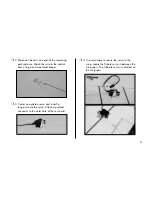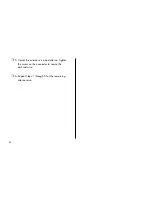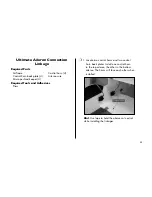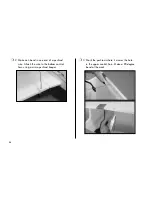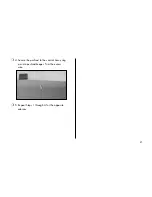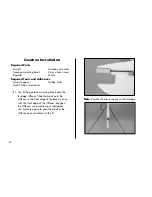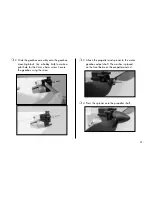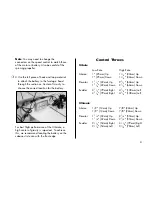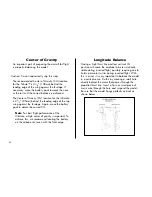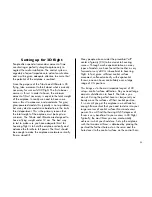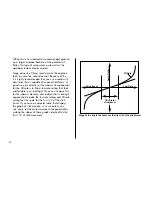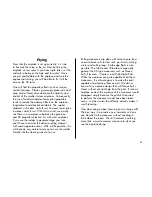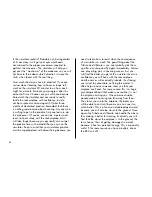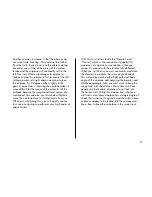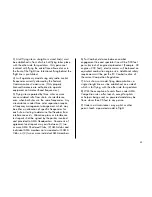
37
Another common misnomer is that the ailerons do
not work while hovering. This could not be further
from the truth. If you do not use the ailerons during
hovering, you will be at the mercy of the motor’s
torque and the airplane will continually roll to the
left. Two very effective techniques to employ to
reduce or stop this rotation is first to counter the left
rolling moment with right aileron and also to lean
the airplane 5–10 degrees either slightly to the
gear or away from it. Leaning the airplane makes it
more difficult for the torque of the motor to roll the
airplane because the weight and thrust vectors are
misaligned. You can also use this mode of flight to
move the airplane closer or further away from you.
When you start doing this, you will quickly realize
that you are starting to perform a very high angle of
attack harrier.
With this in mind lets tackle the “Elevator” and
“Harrier,” which is the second most popular 3D
maneuver. A common misconception is that you
always fly around with the elevator fully deflected.
What you will find is you must continually modulate
the elevator to maintain the same angle of attack.
This is done by watching the flight path and body
angle of the airplane and adjusting the elevator and
throttle accordingly. Also you must work to keep the
wings level with the ailerons. Many times we hear
people say that certain airplanes do not lock into
the harrier well. While this may be true, what you
will find is most every airplane has a magic angle of
attack that minimizes wing-rock, and the pilots whose
airplanes appear to be locked into these maneuvers
know how to keep their airplane in this sweet spot.
36
Is the simulator realistic? Probably not, but regardless
of its accuracy it will get your eyes and hands
accustomed to the proper movements required to
perform the maneuver. The simulator will help you
get over the “mechanics” of the maneuver so you will
not have to think about which direction to move the
sticks when faced with the real thing.
How much should you have to practice? If you are
serious about learning how to hover or toque roll,
work on the simulator 30 minutes to an hour each
night for a month. Evaluate your progress after this
amount of time. Chances are you will have become
bored with the simulator and are ready to really
tackle the real airplane with confidence, but do
not be surprised or discouraged if it takes three
months of dedicated practice. Remember that there
is nothing super-human about hovering. Anyone who
is willing to put in the practice time can learn to do
this maneuver. Of course you can be a purest and
learn to hover solely with the real airplane, but it
will take longer because you physically can not get
the practice time with a model that you can on the
simulator. Keep in mind that your simulator practice
must be supplemented with actual flying because you
need to learn how to react when the consequence
of a mistake is a crash. The good thing about the
Tribute and Ultimate is you can typically pick them
up after a mishap and fly again immediately. Nerves
can play a big part in hovering success, but you
will find the better you get at the simulator the more
confidence you will have with the real airplane
and the nerves will eventually subside, thus freeing
your mind to concentrate on flying the model. It
often helps to have someone show you that your
airplane can hover. For some reason this is a huge
psychological boost that makes you realize it is not
the airplane limiting you. One common mistake
people make is hovering too far away from them.
The closer you are to the airplane, the better you
will be able to control it because you can see it so
much better. This is of course a double-edged sword
because you will also be closer to the ground. Once
again the Tribute and Ultimate can handle the abuse
thus making it better for training. Eventually you will
find that the closer the airplane is to the ground, the
less chance it has of getting damaged in a crash
because it has less potential energy. This is especially
useful if for some reason you have a battery die or
the BEC cuts off.

